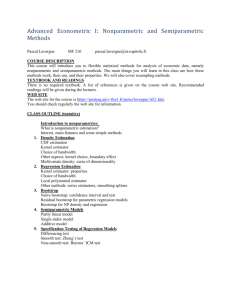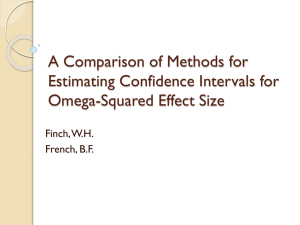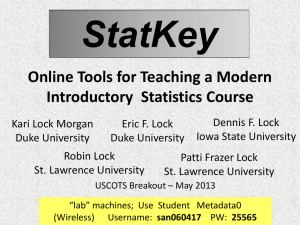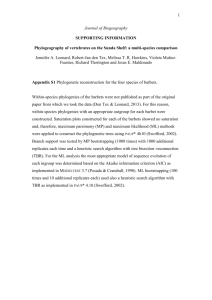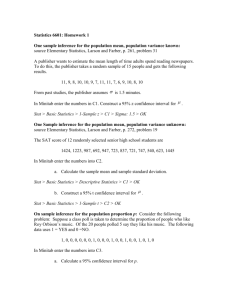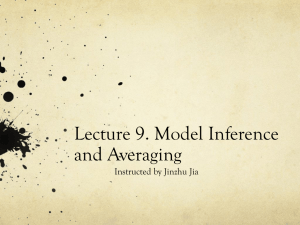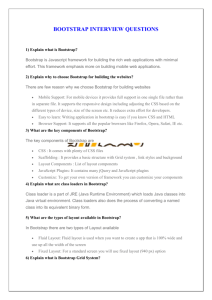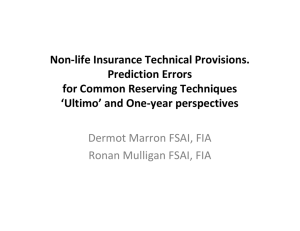The methodology in Wu (1986) was originally designed to build
advertisement
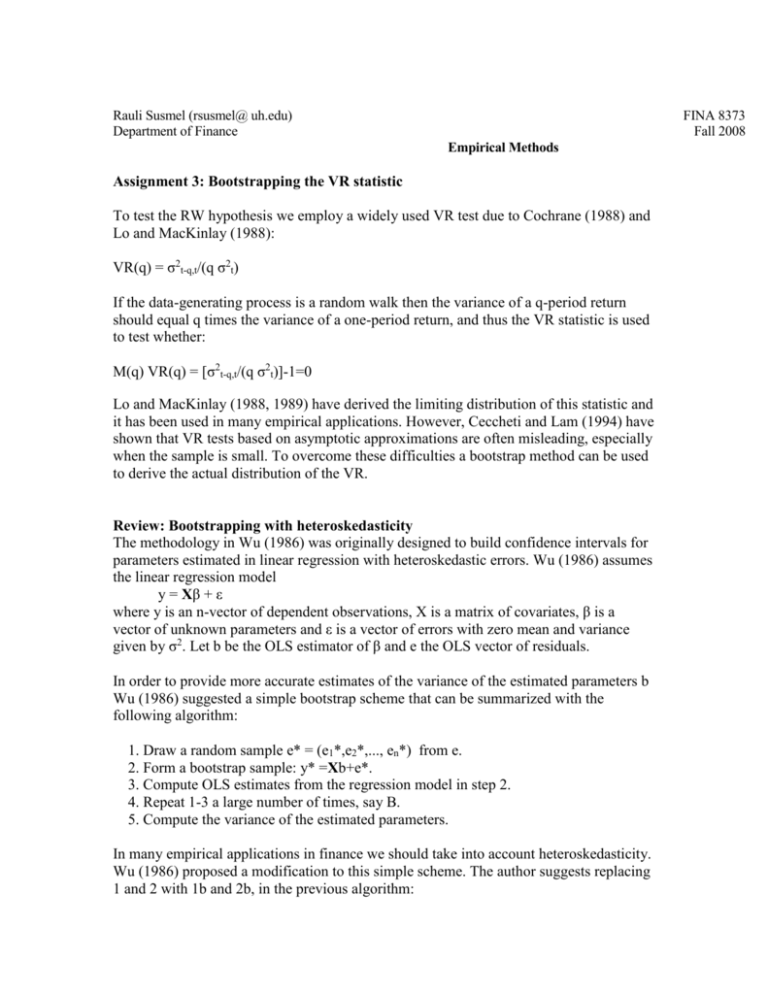
Rauli Susmel (rsusmel@ uh.edu) Department of Finance FINA 8373 Fall 2008 Empirical Methods Assignment 3: Bootstrapping the VR statistic To test the RW hypothesis we employ a widely used VR test due to Cochrane (1988) and Lo and MacKinlay (1988): VR(q) = σ2t-q,t/(q σ2t) If the data-generating process is a random walk then the variance of a q-period return should equal q times the variance of a one-period return, and thus the VR statistic is used to test whether: M(q) VR(q) = [σ2t-q,t/(q σ2t)]-1=0 Lo and MacKinlay (1988, 1989) have derived the limiting distribution of this statistic and it has been used in many empirical applications. However, Ceccheti and Lam (1994) have shown that VR tests based on asymptotic approximations are often misleading, especially when the sample is small. To overcome these difficulties a bootstrap method can be used to derive the actual distribution of the VR. Review: Bootstrapping with heteroskedasticity The methodology in Wu (1986) was originally designed to build confidence intervals for parameters estimated in linear regression with heteroskedastic errors. Wu (1986) assumes the linear regression model y = Xβ + ε where y is an n-vector of dependent observations, X is a matrix of covariates, β is a vector of unknown parameters and ε is a vector of errors with zero mean and variance given by σ2. Let b be the OLS estimator of β and e the OLS vector of residuals. In order to provide more accurate estimates of the variance of the estimated parameters b Wu (1986) suggested a simple bootstrap scheme that can be summarized with the following algorithm: 1. Draw a random sample e* = (e1*,e2*,..., en*) from e. 2. Form a bootstrap sample: y* =Xb+e*. 3. Compute OLS estimates from the regression model in step 2. 4. Repeat 1-3 a large number of times, say B. 5. Compute the variance of the estimated parameters. In many empirical applications in finance we should take into account heteroskedasticity. Wu (1986) proposed a modification to this simple scheme. The author suggests replacing 1 and 2 with 1b and 2b, in the previous algorithm: 1b. For each i, draw a value ti from a distribution with zero mean and unit variance. 2b. Form a bootstrap sample: y* =Xb + ti ei/(1-wii)1/2 , i = 1,…n, where wi = xi’(X’X)-1xi. Cribari and Zarkos (1999) evaluated the performance of this bootstrap methodology by comparing the weighted with the unweighted bootstrap. Their results suggest that weighted bootstrap estimators performed very well, outperforming other estimators, even in the case of homoskedastic errors. Even in the case of non-normality (fat tails) the weighted bootstrap outperform other estimators. The most important difficulty with resampling schemes is that they may generate data that are less dependent than the original data. The bootstrap is a distribution-free randomization technique, which can be used to estimate the sampling distribution of the VR statistic, when the distribution of the original population is unknown. To estimate empirical quantiles for the VR the bootstrap procedure can be carried out in three steps: 1. Draw a bootstrap sample of N observations, rt*, t=1,…,N, with replacement from the empirical distribution of one-period returns, rt. 2. Calculate the VR*(k) from the pseudo data rt*, for k =1,…K. 3. Repeat steps 1 and 2 M times obtaining VR*(k,m), m=1,…M. The nonparametric implementation of Wus (1986) method can be carried by replacing (1) with (1a) and (1b): (1a). For each t, draw a weighting factor zt*, t=1,…,N, with replacement from the empirical distribution of normalized returns zt = (rt- r )/SE(r) , where r is the mean return and SE(r) is the standard deviation of returns. (1b). Form the bootstrap sample of N observations rt*= zt*, t=1,…N, by multiplying each observation of actual returns with its corresponding random weighting factor. Using this procedure, resampling from normalized returns instead from actual returns, the weighted bootstrap method accounts for the possible nonconstancy of the variance of returns. Assignment Using monthly S&P 500 (1962 to 2008), calculate the VR(q) statistic for q=2, 8. Let B=1,000. 1) Present the p-values using the usual asymptotic distribution. Present the bootstrap pvalues. What do you learn? 2) What issues can complicate your calculations? How would you solve it? References Cecchetti, S. G. and P. Lam (1994), P. Variance ratio tests: small-sample properties with an application to international output data. Journal of Business and Economic Statistics, 12, p. 177-186. Cribari-Neto, F. and S. G. Zarkos (1999), Bootstrap methods for heteroskedastic regression models: evidence on estimation and testing. Econometric Reviews, 18, p. 211228. Lo, A. W. and A.C. MacKinlay (1988), Stock market prices do not follow random walks: evidence from a simple specification test. The Review of Financial Studies 1, p. 41-66. Lo, A. W. and A.C. MacKinlay (1989). The size and power of the variance ratio test in finite samples. Journal of Econometrics 40, p. 203-238. Wu, C. F. J. (1986), Jackknife, bootstrap and other resampling methods in regression analysis. Annals of Statistics, 14, p. 1261-1295.
